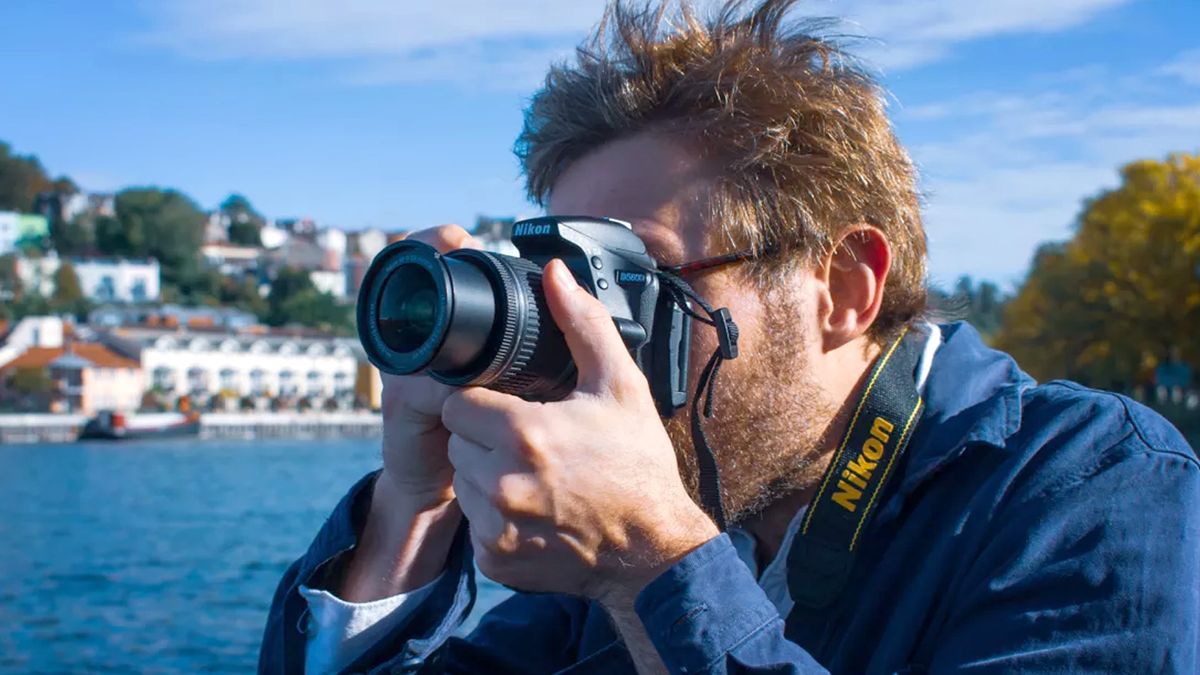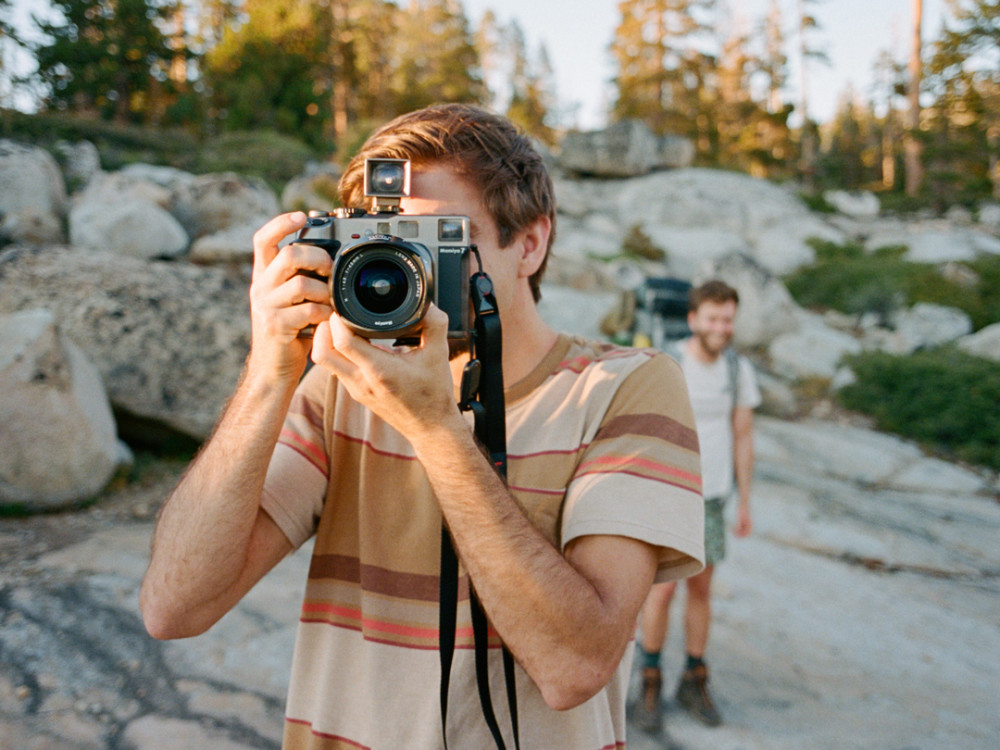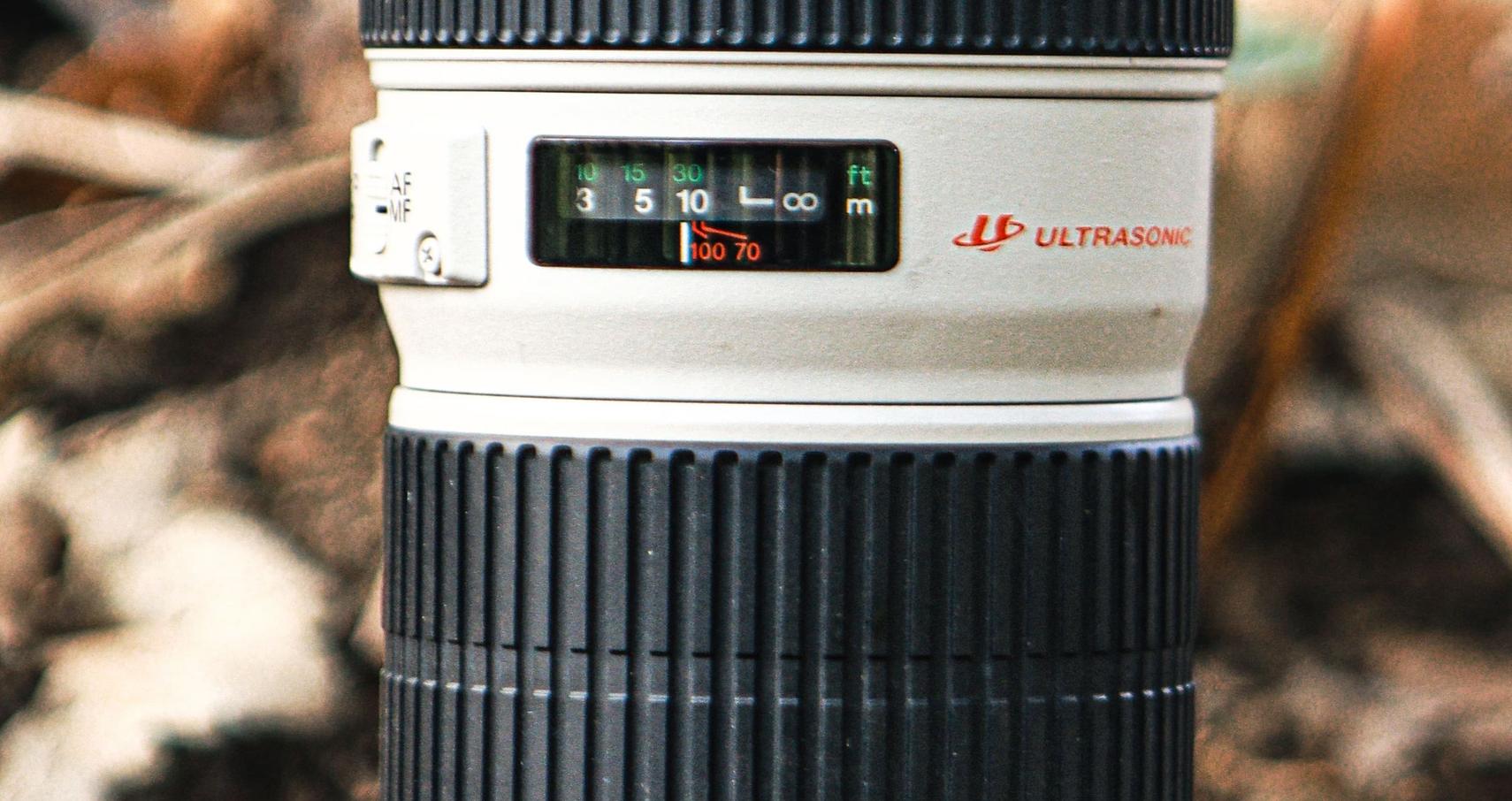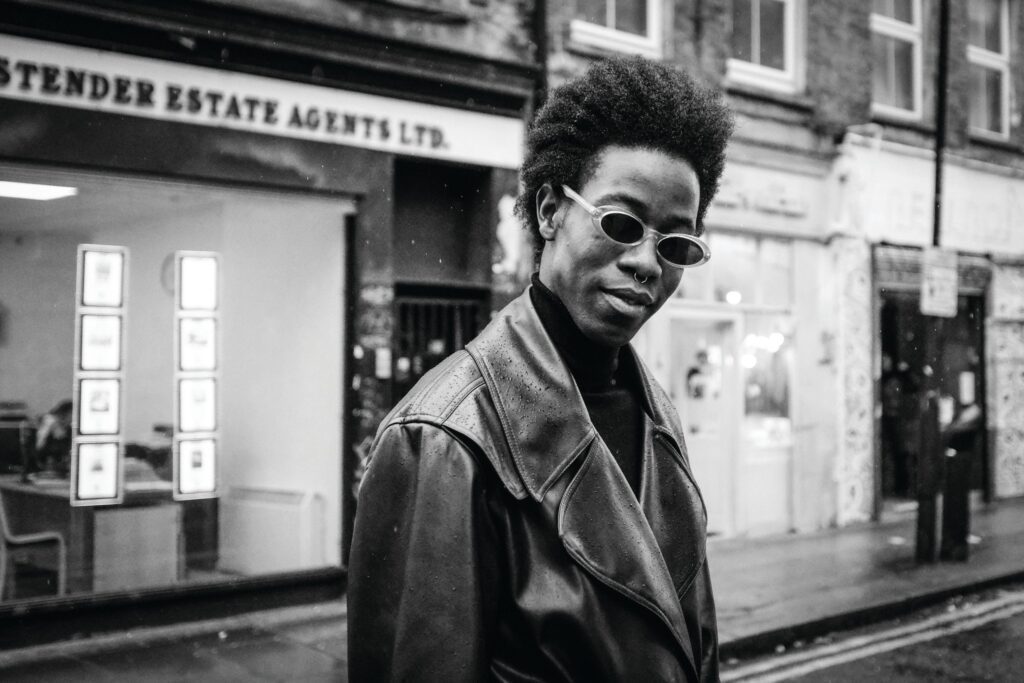The Leica M6 and Canon AE-1 are outstanding film cameras for street photography. Both offer robust designs and exceptional image quality.
Street photography captures the essence of everyday life, and selecting the right film camera can make all the difference. Photography enthusiasts often seek a lightweight and discreet camera that still delivers high-quality results, making film cameras a popular choice. The mechanical reliability and simple controls of the Leica M6 have made it a staple for street photographers who appreciate its rangefinder system for fast focusing.
Meanwhile, the Canon AE-1, known for its accessibility and ease of use, allows photographers to shoot quickly and react to fleeting moments. These cameras not only offer the tactile experience of film but also produce textured images that digital cameras often struggle to replicate. With a film camera, photographers are more deliberate with each shot, enhancing the creative process and the storytelling aspect of street photography.
The Timeless Allure Of Film Photography
In a world where digital snapshots reign supreme, film photography retains its enchanting power. Film cameras offer an authentic, tangible experience that modern technology struggles to replicate. It’s not just about taking pictures; it’s about capturing moments with a physical medium that ages, develops, and tells a story beyond the shot itself. With their classic mechanisms and meticulous processes, film cameras cement a special place in the heart of street photography, where every spontaneous scene can turn into a masterpiece.
The Film Revival In The Digital Age
Even as digital cameras dominate the market, there’s a notable revival in film photography. Enthusiasts and professionals alike are dusting off vintage gear, contributing to a resurgence of film usage.
- Rising numbers of photography students choosing film
- Film-focused workshops and meetups gaining popularity
- Increased availability of film stocks in camera stores
Emotional Connection With Analog Photography
Film photography forges an emotional bond with its practitioners. Analog cameras demand intention, patience, and skill.
The anticipation of developing film rolls, combined with the warmth and character of grain, draws photographers to this timeless medium. The allure is clear: every film frame captures not just images, but feelings.
| Reasons for Emotional Connection | Examples |
|---|---|
| Physicality of Film | Handling and loading rolls |
| Anticipation of Results | Waiting for development |
| Unique Aesthetic | Grain patterns, color rendition |
Street Photography: Capturing Life’s Candid Moments
Imagine walking down a bustling city street, camera in hand. You’re on the hunt for that perfect, unscripted moment—a child’s laughter, a vendor’s smile, or the play of shadows and light. This is the essence of street photography, an artistic pursuit that freezes everyday life into remarkable images. To truly embody the spirit of this genre, choosing the right camera is crucial. Street photography thrives on agility and intuition, and there’s something about a film camera that amplifies this raw, organic experience.
Essence Of Street Photography
Street photography captures life in its purest form. It’s spontaneous, unpredictable, and vibrantly human. The essence of street photography lies in its ability to present the mundane as extraordinary, turning a simple scene into a story. Film cameras, with their manual controls and tactile nature, invite photographers to fully engage with their surroundings.
Why Choose Film For Street Photography
- Tactile Experience: Film cameras offer a hands-on approach to photography. Each manual adjustment demands attention, creating a deep connection between photographer and camera.
- Thoughtful Composition: With a limited number of frames, film photographers compose each shot with care, often resulting in more impactful images.
- Timeless Aesthetic: Film has a unique grain and color rendition that digital cameras struggle to imitate. This aesthetic injects a sense of nostalgia into street scenes.
- Surprise Element: The delayed gratification of developing film can lead to unexpected results, adding another layer of excitement to capturing life’s spontaneous moments.
Top Film Cameras For Street Snappers
Street photography captures life in its rawest form. For this art, a good film camera is a must. Film cameras bring a classic touch to each snapshot. Let’s dive into the world of film cameras perfect for street snappers.
Legendary Models
Film photography wouldn’t be the same without these icons. Their timeless designs and reliable mechanics make them perfect companions for the urban explorer.
- Leica M6: Known for its robust build and exceptional image quality.
- Nikon FM2: Offers durability and mechanical precision beloved by photographers.
- Canon AE-1 Program: User-friendly with automatic mode, making it a crowd favorite.
- Olympus Trip 35: Compact and perfect for quickly capturing fleeting moments.
Modern Classics
These cameras blend classic film photography with modern features. They are the bridge between old and new, offering the best of both worlds.
- Fujifilm Klasse W: A point-and-shoot with sharp lenses for crisp images.
- Voigtlander Bessa R4M: Wide-angle lens ready for vast cityscapes.
- Contax T2: Combines a sleek design with high-quality optics.
- Lomography Lomo LC-A 120: Brings a unique lo-fi aesthetic to medium format film.
Whether a legendary model or a modern classic, the best film camera for street photography fits comfortably in your hand and aligns with your creative vision. It captures the essence of the streets, one frame at a time.

Credit: www.space.com
Navigating The Analog Jungle
Embrace the challenge of analog photography in the bustling streets. Street photography invites candid moments caught on film. In this analog jungle, your choice of film camera is crucial. It’s not just a tool; it’s a companion on your urban safari. Let’s explore how to find the perfect analog camera.
Factors To Consider When Choosing A Film Camera
Selecting a film camera involves various considerations. Prioritize features for street photography. Think about durability, ease of use, and image quality. Consider these points:
- Lens quality: Sharp, fast lenses capture fleeting moments.
- Camera type: Rangefinders and SLRs have their own pros and cons.
- Film format: 35mm is popular but medium format can provide richer detail.
- Manual controls: They offer creative freedom with settings.
- Shutter speed: Quick shutter speeds freeze action beautifully.
- Light meter: Built-in meters aid in tricky lighting situations.
The Importance Of Size And Weight
A heavy camera can slow you down. Cumbersome gear draws attention. Choose light and compact for agility. Seek a balance between comfort, portability, and features. Lighter cameras enable longer shoots without fatigue. Stealth is key in street photography; smaller cameras are less intrusive.
| Camera Type | Weight Range | Size Consideration |
|---|---|---|
| Rangefinders | Light to moderate | Compact for discreet shooting |
| SLRs | Moderate to heavy | Larger but versatile |
| Point-and-Shoot | Very light | Ultra-compact for ultimate portability |
Test cameras if possible. Comfort in hand matters. The best camera feels like an extension of you.
Glass Matters: Lenses For Street Photography
Choosing the right lens is crucial for street photography. The lens determines how you capture life on the streets. A great lens can make a simple scene come alive. It’s not just about the camera body. Let’s explore the best lens options for your street adventures.
Prime Vs. Zoom Lenses: What’s Best?
Prime lenses have a fixed focal length. Zoom lenses let you change the focal length. Both have pros and cons for street photography.
- Prime Lenses: Offer crisp images and wide apertures. Great for low light and creating bokeh.
- Zoom Lenses: Versatile and practical. Capture different perspectives without changing lenses.
| Prime Lens | Zoom Lens |
|---|---|
| Higher quality at a given focal length | Convenience of multiple focal lengths |
| Lighter and more compact | Heavier and bulkier |
| Encourage creative compositions | Offer more framing flexibility |
Prime lenses shine in street photography. They push photographers to be more agile. Yet, when you need versatility, zoom lenses have your back.
Iconic Lenses For Street Scenes
Some lenses have legendary status in the street photography world. These lenses have captured timeless images.
- Leica Summilux 50mm f/1.4: The classic standard for street work. Creates beautiful bokeh.
- Canon 50mm f/1.8 STM: Affordable and sharp. A beginner’s best friend.
- Nikon 35mm f/2: Perfect for wider scenes. Fast and compact.
The right lens can elevate simple moments into powerful storytelling tools. These lenses have proven their worth on the streets.
Film Choices For Street Togs
Selecting the perfect film is a crucial step for any street photographer. With film, you capture the essence of the scene you’re photographing. Consider the mood, grain, and response to light. Let’s explore the best film options to match your vision and technique on the streets.
Black And White Vs. Color
Black and white film simplifies the world into shades and contrasts. It’s about capturing the raw reality without the distraction of color. Color film, on the other hand, adds a vivid layer to your photos. Color can tell a story that black and white can’t. But it also can complicate. Think about what speaks to you more. Do the shadows and lights draw you in, or do the bustling colors of the urban space?
- Black and White: Builds drama and timeless images.
- Color: Captures the vibrancy and dynamic nature of urban life.
Choosing The Right Iso
ISO measures film sensitivity to light. Street photography often requires quick adjustments and versatility. The right ISO can make a big difference.
| ISO Setting | Conditions | Result |
|---|---|---|
| Low ISO (100-200) | Sunny Days | Sharp details, minimal grain |
| Medium ISO (400) | Overcast | Good balance, finer grain |
| High ISO (800+) | Low Light | Increased grain, suits night scenes |
Consider the look you want and the lighting conditions. Street photography is unpredictable. Always be ready to adapt your film choice accordingly.
Tips for choosing the right ISO for street photography:
- Consider your speed: Fast-paced scenes need higher ISO for crisp shots.
- Grain preference: Some love grain for a vintage feel. Others prefer clean shots. Choose ISO based on your style.
- Light availability: Use lower ISO in bright conditions. Increase it when light drops.
Camera Settings And Techniques For Sharp Shots
Mastering camera settings and techniques ensures crisp images during street photography escapades. Seasoned photographers favor robust film cameras, such as the Leica M6 or Pentax K1000, for their reliability and manual control, essential for capturing the dynamic street scenes.
Taking sharp photos in street photography can be challenging. Fast-moving subjects and changing light conditions require specific camera settings and techniques. Understanding how to adjust your film camera can make all the difference. Here, we’ll explore key settings and methods to help you capture crystal-clear street snaps every time.
Shutter Speeds And Apertures
To get sharp images, mastering shutter speeds and apertures is crucial. Here’s a quick guide:
- Shutter Speed: Use a fast shutter speed to freeze motion. Anything over 1/250 sec works well for street scenes.
- Aperture: A small aperture (high f-number) increases the depth of field, keeping more of your scene in focus. Aim for f/8 or f/16.
Zone Focusing For Faster Shooting
For street photographers, missing a shot can mean missing a moment that never repeats. Zone focusing streamlines the shooting process.
- Set Your Distance: Decide on a focus distance suited for your scene. It’s common to set it at 10 feet.
- Adjust Aperture: Choose an aperture that keeps objects within your focus zone sharp. Something like f/8.
- Pre-Focus: Set your lens to the chosen distance ahead of time for faster shooting.
Accessorizing Your Street Shooter
As you hit the pavement with your trusted film camera for street photography, it’s essential to complement it with the right accessories. These add-ons are not just about style; they enhance functionality, improve handling, and offer protection. Let’s dive into the must-have accessories that will elevate your street photography game.
Must-have Accessories
- Durable Camera Strap: Opt for a comfortable, sturdy strap for secure shooting on the go.
- Extra Film Rolls: Carry multiple rolls to never miss a shot.
- Lens Cleaning Kit: Keep your shots crystal clear with a portable cleaning kit.
- Compact Camera Bag: Choose a small bag to protect your gear without the bulk.
Keeping It Subtle And Light
Street photography thrives on spontaneity and discretion. Bulky accessories can slow you down or draw unwanted attention. Embrace a minimalist approach with gear that complements your agility.
| Accessory | Benefit |
|---|---|
| Thin Camera Strap | Provides comfort, avoids bulk. |
| Soft Shutter Release | Allows quiet, vibration-free shots. |
| Collapsible Lens Hood | Blocks glare, maintains lens compactness. |
Keep your setup lightweight for those long walks and quick captures. With the right balance of essentials, your street photography experience will be as smooth as the snapshots you aim to take.
Developing Your Eye: Composition And Storytelling
Developing your eye in street photography isn’t just about having the best film camera. It’s about capturing moments that have a story. Good composition and storytelling are skills that turn ordinary shots into compelling photographs. Let’s dive into how the rule of thirds and narrative building can enhance your street photography.
The Rule Of Thirds In Street Photography
The rule of thirds is a powerful tool for crafting balanced photographs. Imagine your image divided by two horizontal and two vertical lines. Aim to place the most important elements at the intersections of these lines. Here’s how it can bring life to your street photography:
- Better balance in your photos, creating a more pleasing view.
- Guiding the viewer’s eye to the subject, emphasizing key parts.
- Adding depth and interest by aligning elements along these lines or intersections.
Building A Narrative Through Images
Compose a visual story that speaks volumes. Film cameras challenge you to think critically about each shot. Here’s how you can tell a story through your images:
- Look for sequences of events that unfold in front of you.
- Focus on emotions, interactions, and expressions.
- Include environmental context to give viewers a sense of place.
Each photograph should be a stand-alone chapter of a larger story. Let your images narrate the unique tales of the streets.

Credit: www.fieldmag.com
From Negative To Print: The Darkroom Experience
The transition From Negative to Print is a magical journey for any street photographer. It’s a process that turns a moment caught on film into a tangible piece of art. In the world of street photography, film cameras hold their charm with the promise of this distinct Darkroom Experience. It’s not just about the shot; it’s the thrilling process of developing and printing that captures the essence of photography’s root.
Home Development Basics
Diving into home film development is an adventure in itself. Here’s a quick guide to get started:
- Gather your supplies: film developer, fixer, stop bath, and a developing tank.
- Load the film onto a spool in complete darkness.
- Mix chemicals as indicated for your film type.
- Follow the timed steps for developing, stopping, fixing, and washing.
- Dry your negatives in a dust-free area.
With these steps, a perfect set of negatives is ready for the printing adventure.
The Joy Of Printing Your Own Photographs
There’s pure joy in watching a print emerge in the developer bath. Here’s what makes printing photographs so special:
- Selecting the right image from your roll is the first big step.
- Choose paper type—glossy or matte—for the desired finish.
- Create a test strip to ensure the perfect exposure.
- Expose the paper under an enlarger, where time and light are key.
- Develop, stop, and fix the print, much like with negatives.
- Witness the birth of your photograph as the image appears.
Printing adds a personal mark to each image, creating a unique piece that reflects the photographer’s vision.
Sharing Your Analog Art
Sharing Your Analog Art is a beautiful journey in the realm of film photography. The visceral experience of capturing life’s candid moments on film is unparalleled. But what follows after the click of the shutter is equally thrilling. It’s time to bring those street photography masterpieces to light, where they can spark admiration and inspiration.
Joining Film Photography Communities
Connect with fellow enthusiasts and immerse yourself in the vibrant world of analog photography. Here’s how:
- Online Forums: Digital platforms abound where shutterbugs convene to discuss, learn, and grow.
- Social Media Groups: Instagram and Facebook are home to countless groups focused on film photography.
- Local Clubs: Engage with local film communities for workshops, photo walks, and darkroom tips.
Exhibiting Your Work
Showcasing your photographs breathes life into them. Consider these platforms for exhibiting your street photography:
- Gallery Shows: A classic way to present your work and interact with an audience.
- Pop-Up Exhibits: Organize or join temporary showcases in unique, high-footfall spaces.
- Online Portfolios: Create a digital gallery to display your photographs worldwide.
Embrace the joy of seeing your work in print and the possibility of inspiring others. Highlight textures, tones, and stories captured through your lens. Your analog art is not just a personal treasure but a gift to the community.

Credit: skylum.com
Maintaining Your Film Camera
Maintaining your film camera is crucial, especially if you are passionate about capturing the raw, candid moments of street photography. To ensure your camera operates at its fullest potential, regular maintenance is key. From cleaning to regular check-ups, keeping your film camera in top shape will allow it to be a reliable partner in your creative journey.
Regular Cleaning And Check-ups
Treat your film camera like a prized possession. Regular cleaning prevents dust and dirt from affecting your camera’s performance. Ensure each cleaning session covers the lens, viewfinder, and camera body.
- Wipe the lens with a soft, lint-free cloth to avoid scratches.
- Use a blower brush to dust off the camera body.
- Clean the viewfinder with a dedicated cleaner for a clear vision.
- Check the battery compartment for any corrosion.
It’s good practice to schedule professional check-ups yearly. This way, experts can catch any issues early on.
Finding A Good Repair Service
Finding a repair service you can trust with your film camera is vital. Look for shops with a strong reputation and skilled technicians. They should have experience with various camera models, especially vintage ones.
| Service Provided | Why It’s Important |
|---|---|
| General Maintenance | Keeps the camera functioning smoothly |
| Lens Calibration | Ensures sharp and accurate focus |
| Shutter Speed Adjustments | Maintains accuracy in capturing motion |
Remember to ask for references and check reviews. Build a rapport with technicians. Your camera deserves the best care.
Frequently Asked Questions On Best Film Cameras For Street Photography
What Are The Top Film Cameras For Street Photography?
The top film cameras for street photography often include the Leica M6 for its compactness and reliability, the Pentax K1000 for its sturdy build and ease of use, and the Canon AE-1 for its affordability and lens variety. These cameras are prized for their mechanical precision and timeless image quality.
How To Choose A Film Camera For Street Photography?
When choosing a film camera for street photography, prioritize factors such as size and weight for portability, manual controls for exposure adjustments, a quiet shutter for discretion, and a wide lens compatibility to accommodate different shooting scenarios. Reliability and user experience are key considerations.
Why Use Film Cameras For Street Photography?
Film cameras offer a distinct aesthetic with grain and color rendition that digital can’t replicate. They encourage a more thoughtful approach to composition due to the limited number of shots per roll. This slow-paced method can lead to more deliberate and impactful street photography.
Are More Affordable Film Cameras Suitable For Street Photography?
Yes, affordable film cameras like the Olympus OM-1 or Minolta X-700 are suitable for street photography. They provide the necessary manual controls and good lens quality without the high price tag, making them accessible options for photographers at any skill level looking to engage with film.
Conclusion
Navigating the realm of street photography can be thrilling, and the right film camera elevates that experience. Our list provides a curated selection to satisfy both novices and seasoned snappers. Remember, the best camera is the one that resonates with your creative spirit and feels like an extension of your vision.
Embrace the quirks and joys of film photography and capture the world, one frame at a time.


